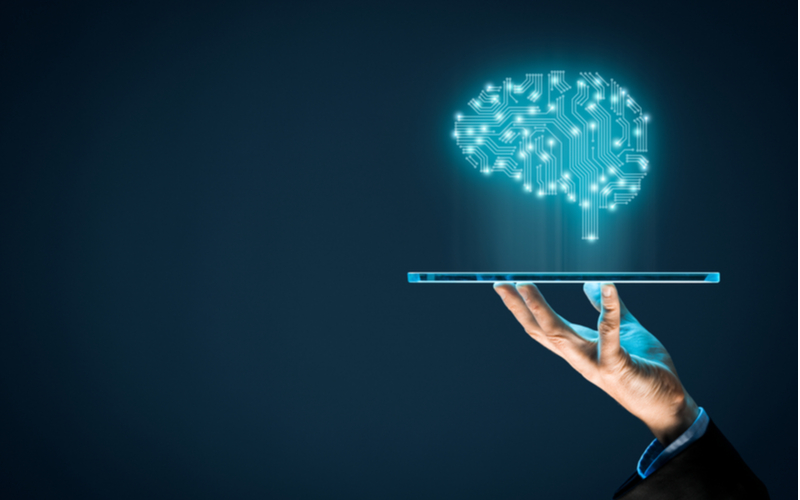Machine learning: a two-way teaching process
Posted on: October 19, 2021
What do self-driving cars, speech recognition software and LinkedIn have in common?
Along with many of the services we use every day, the answer is their reliance on machine learning. In fact, in today’s digital world, few aspects of our lives aren’t powered by this technology.
Social media platforms like Twitter and Instagram, entertainment systems like Netflix and YouTube, virtual assistants like Alexa and Siri, search engines like Google and Baidu – all depend on machine learning algorithms. They influence the music we listen to, the products we buy, the routes we drive home, the people we connect with – and much more.
Over recent years, technology has needed to quickly adapt to the unparalleled production of new data and fast-changing business requirements. Despite being the most common form of artificial intelligence in action today, the field of machine learning continues to grow.
What is machine learning?
IBM define machine learning as a subset of artificial intelligence (also known as AI) and computer science which focuses on the use of data and algorithms to imitate the way that humans learn, gradually improving its accuracy.
In a landscape of ever-expanding datasets, it’s not always viable – or indeed possible – for humans to analyse and extract information themselves. Machine learning plugs this gap, using programmes to find patterns across millions of data points. Data mining at this scale and speed is an invaluable, inexpensive commodity to businesses who depend on its validation and insights to inform future decisions and improve metrics. As such, its use cases are widespread and have changed the landscape of modern technology.
Where is machine learning used?
The following figures paint a picture of how machine learning has revolutionised practices across numerous industries:
- $28.5 billion – the total funding allocated to machine learning worldwide during the first quarter of 2019
- $1 billion – the amount saved by Netflix through the use of its algorithms
- 95% – the accuracy with which it predicts patient mortality in healthcare
- 3.7 seconds – the duration needed by Deep Voice (a text-to-speech system constructed from deep neural networks) to clone a voice
- 62% – the accuracy with which algorithms predict stock market highs and lows
- 10 million – the number of products consumers can access with one-day shipping thanks to machine learning in Amazon fulfilment centres
The financial sector has long been a proponent of machine learning – now, businesses spanning a vast array of other sectors are steadily adopting this technology. Machine learning is heavily embedded within manufacturing and supply chains, communications, transportation, healthcare, advertising, energy management and countless other industries. With applications from automation to customer data insights, leveraging machine learning to optimise business practices and get ahead of competitors is crucial.
What’s the difference between machine learning and artificial intelligence?
While the terms machine learning and artificial intelligence are often used interchangeably, there are key differences.
SAS explains that while artificial intelligence is the broad science of mimicking human abilities – such as behaviour and intelligence – machine learning is a specific subset that trains a machine how to learn.
As well as machine learning, there are many other subsets: neural networks; deep learning; computer vision; and natural language processing. Artificial intelligence uses all of these learning techniques to solve real-world problems. Deep learning, in particular, has led to rapid growth within both machine learning and artificial intelligence in recent years. One example is its use of neurons and deep neural networks, used to power smartphones and tablets worldwide.
How does machine learning work?
At its core, machine learning applies statistics over observed data in order to establish a process that can achieve a task. Its algorithms analyse data, identify patterns, and generate the requisite outputs.
An umbrella term, it comprises three main learning systems:
- Supervised machine learning uses training data as a tutorial, teaching algorithms how to make predictions. Spam filtering of emails is an example of supervised learning: labelled data which indicates potential spam is given to the system (including blacklisted email addresses, suspicious words or phrases, and malicious links) for it to analyse future emails, employing pattern recognition to assess whether or not they are spam. Use of support vector machines and decision trees – for classification, logistic regression and linear regression challenges – falls within this category.
- Unsupervised machine learning reveals hidden patterns in unlabelled data where there are no outputs to predict. Language translation of Facebook content is an example of unsupervised learning: in cases where the platform does not have many examples of translations from one language to another, a combination of word-for-word translation, language models and back translation is used for the system to translate independently. Clustering and association algorithms fall within this category.
- Reinforcement machine learning focuses on optimisation, using a reward/punishment model to train a system to maximise correct decisions and minimise incorrect decisions. Reinforcement learning is one of the machine learning models used within healthcare: as well as implementing dynamic treatment regimes, its applications include drug discovery and development, automated diagnosis, resource scheduling and resource allocation. It’s also the technology behind many self-driving vehicles.
- Semi-supervised learning is, as the name suggests, a combination of both unsupervised and supervised learning algorithms. Using more unlabelled than labelled input data, it has numerous applications – from image and speech recognition, to crawling engines and classifying content.
Various machine learning methods and strategies are available depending on an organisation’s aim. For example, if a business has insufficient upfront data, real-time machine learning can be used; live data is run through the model in order to continuously improve it. In other cases, as with financial fraud prevention, real-time data is needed to constantly monitor transactions and highlight suspicious activity.
Acquire key machine learning skills to excel in the job market
One of the major challenges for machine learning within businesses is the lack of skilled data scientists. Are you eager to understand how machine learning works? Want to use knowledge of big data learning tools to commercial advantage? Ready to develop your data science skills and enhance your employability and career prospects?
With Keele University’s online MSc Computer Science with Data Analytics programme, you’ll gain a strong foundation in artificial intelligence methods. From advanced visualisation techniques to data management, you’ll develop sought-after skills to succeed in the growing field of computer science, preparing you for a wide range of careers at companies who depend on data to deliver their products and services. You’ll also learn programming languages, including Python, R and Matlab.
